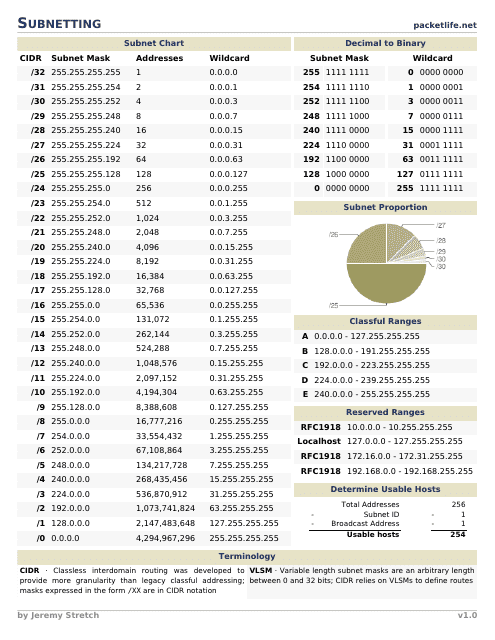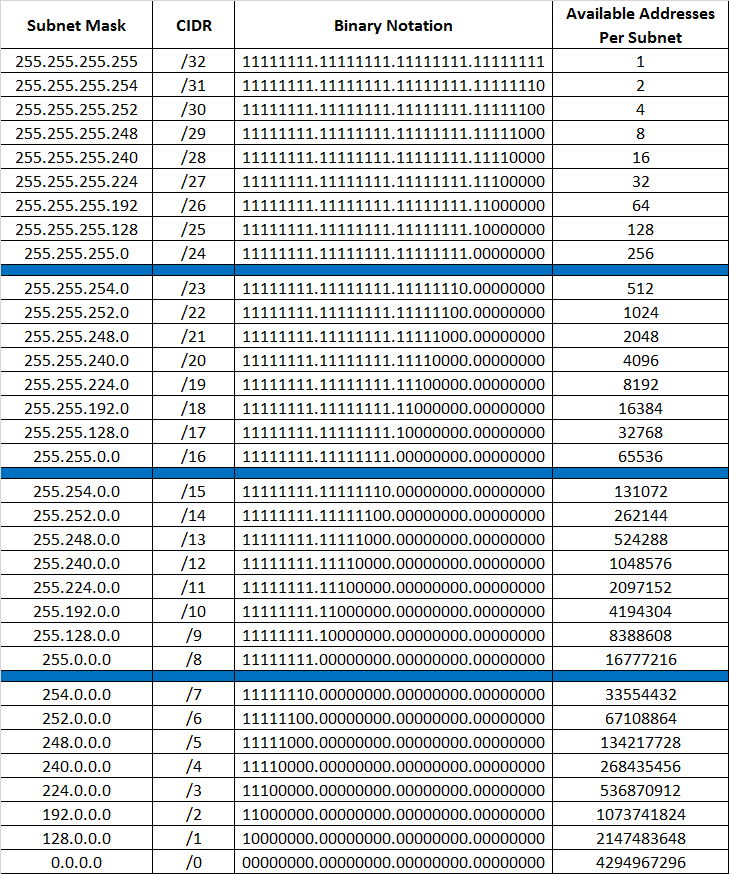



We see the first 28 binary digits are in the one position. In this example, our internet provider gave us a different subnet mask (/28). *Remember that hosts cannot have an IP address that ends in the first or last number in the available range.*Ĭlassful addressing will use the following subnet masks.īut what if we want a /28 subnet mask, for instance? In this next example, our internet provider gave us an IP range of 199.44.6.0 with a /24 subnet, allowing 254 IP addresses. So, the first 24 binary digits (or three octets) of an IP range are for the network (non-changing), and the last eight binary digits (last octet) are for the hosts. The above example is called a /24 (pronounced whack 24) subnet because there are 24 binary digits in the “1” (or network) position. *Note that subnet masks can only be written with all ones followed by all zeros.* Any binary digit that is a “1” is for the network, while a “0” is for the host. We can view this when examining the subnet mask in binary format. Subnet masks determine which part of the IP address is for the network, and which is for the host. Understanding this will assist you in setting up your networks and is required on both the CompTIA Network+ and Cisco Certified Network Associate exams. While IPv4 addresses appear to be four sets of numbers separated by decimals, they are actually made up of 32 ones and zeros. The subnet mask determines how many IPv4 addresses can be assigned within a network. Subnetting allows a computer/host to know if the machine it wants to talk to is local or outside of its network.


 0 kommentar(er)
0 kommentar(er)
